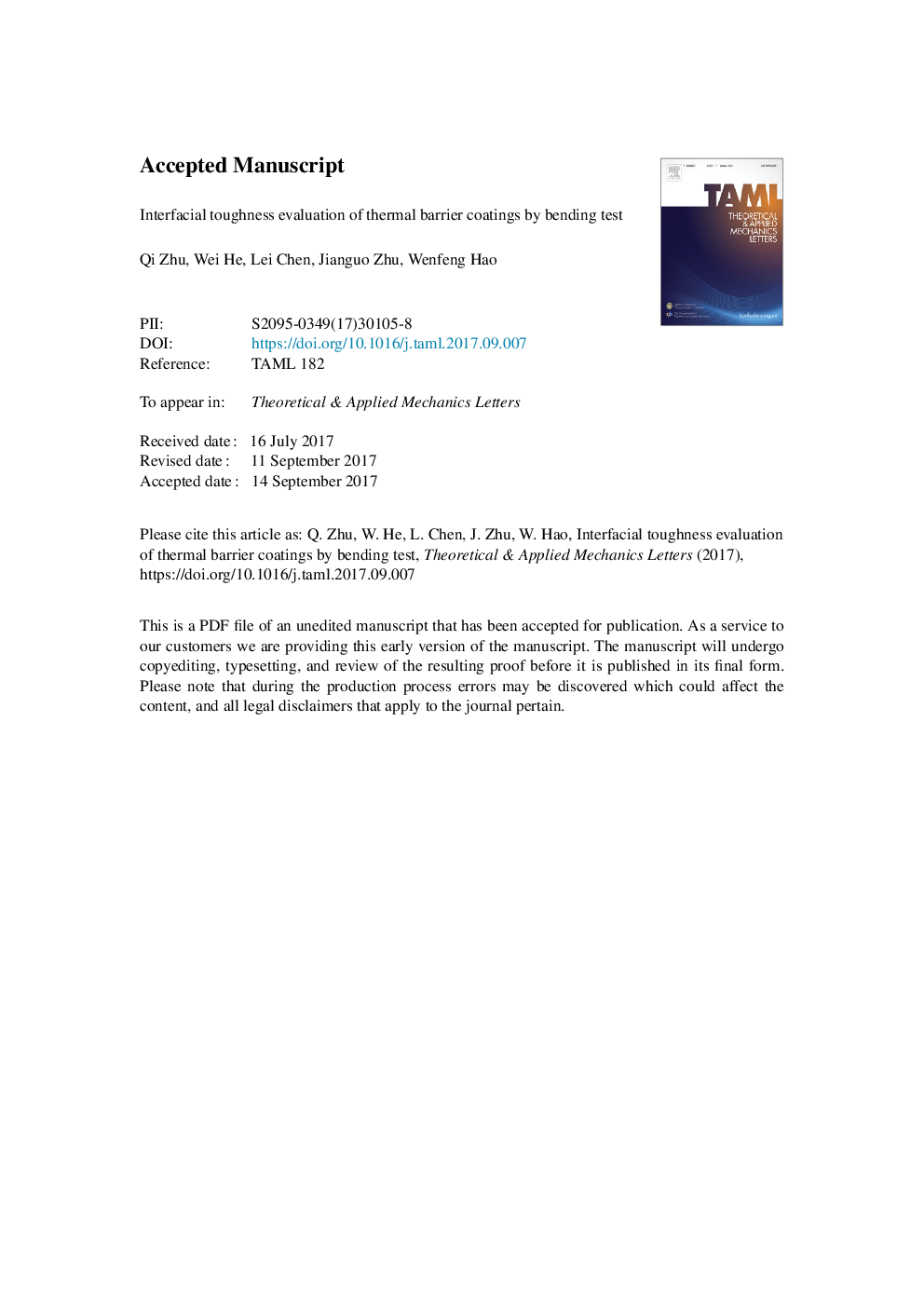| Article ID | Journal | Published Year | Pages | File Type |
|---|---|---|---|---|
| 7196462 | Theoretical and Applied Mechanics Letters | 2018 | 8 Pages |
Abstract
Determining the interfacial properties of thermal barrier coatings (TBCs) is imperative for their durability evaluation and further improvements. A ceramic coating (topcoat) and a NiCoCrALY bondcoat were atmospheric-plasma-sprayed (APS) on a stainless steel substrate. A modified three-point bending test was adopted to initiate and propagate the topcoat/bondcoat (TC/BC) interfacial crack. After a complete delamination, the fracture surfaces were examined by an optical microscope, which shows that the cracking plane was merely on the TC/BC interface. Based on the experimental results of load-displacement and crack length-displacement, the strain energy release rate G for crack propagation was calculated, and the averaged magnitude was 77.1 J/m2. Repeatable results have indicated that the method can be used for the evaluation of interfacial fracture toughness in thermal barrier coatings and other multi-layer structures.
Related Topics
Physical Sciences and Engineering
Engineering
Mechanical Engineering
Authors
Qi Zhu, Wei He, Lei Chen, Jianguo Zhu, Wenfeng Hao,
